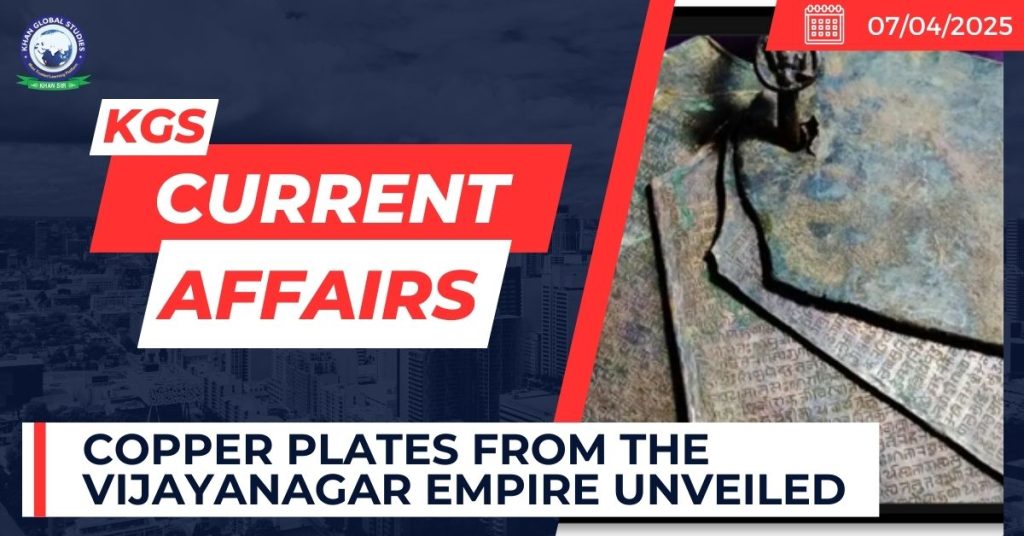Context:
Recently, Falcon Coins Gallery and the Archaeological Survey of India (ASI) unveiled a set of copper plates dating back to early 15th Century from the reign of Devaraya I of the Sangama Dynasty.
More on the News
This is the first known coronation copper plate to emerge, alongside two others from the Maitraka Dynasty (found in Junagadh, Gujarat) and the Ganga Dynasty (found in Talakadu, Karnataka), which remain undeciphered.

These copper plates are written in Sanskrit, Kannada and Nāgarī characters, issued during the coronation of King Devaraya I.
Instead of the Varaha seal, which is the royal insignia of the Vijayanagar empire, the copper spiral binding the five plates bears the seal of Vamana, an avatar of Vishnu.
The copper plates are dated Saka 1328 (Nãga-Chakshu-Guna Sasi), Vyaya, Kārtika ba. Daśami (10), corresponding to November 5, 1406 CE, which provides a detailed genealogy of the Sangama Dynasty.
According to Deputy Superintending Epigraphist at ASI, the plates record that King Devaraya I, son of Harihara, granted the village of Gudipalli — along with two hamlets, Rājēndramāda and Udayapalli — during his coronation.
The Gudipalli village was later renamed Devaräyapura-agrahāra and divided into 61 shares distributed among several Brahmins of various gotras and sutras, well-versed in the Vedas and shastras. The allocation included

- 26.5 shares to Rigvedins
- 29.5 shares to Yajurvedins
- three shares to Shukla-Yajurvedins
- two shares as Dēvabhāga to Somanatha (Shiva) and Janardhana.
There are very few inscriptions that mention the date of the coronation of the Vijayanagar kings, one of which is the inscription found in Kalahasthi that mentions the date of the coronation of Achyuta Deva Raya.
Vijayanagara Empire
The Vijayanagara Empire was a powerful South Indian empire established in 1336 by two brothers, Harihara and Bukka.
The Vijayanagara Empire was ruled by four following dynasties:
- Sangama Dynasty (1336-1485): Founded by Harihara I and Bukka Raya, this dynasty established the empire.
- Saluva Dynasty (1485-1505): Succeeded the Sangama dynasty.
- Tuluva Dynasty (1505-1570): Known for the reign of Krishnadevaraya, considered the golden age of the empire.
- Aravidu Dynasty (1570-1646): The last dynasty to rule the Vijayanagara Empire.
Archaeological Survey of India (ASI)
- ASI was established in 1861 after a proposal put by Alexander Cunningham which was sanctioned
- Alexander Cunningham (the father of Indian archaeology) was appointed as the first Director-General of ASI in 1861.
- Currently, ASI is under the administrative control of the Ministry of Culture and functions as the premier organization for the archaeological research and protection of the cultural heritage of the nation.
- Archaeological Survey of India (ASI) is headquartered in New Delhi.

